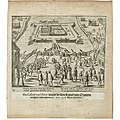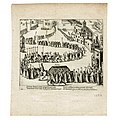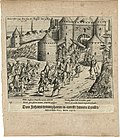Life
Born to Protestant parents in Deinze, Flanders and a fervent counter-remonstrant, Baudartius left the Spanish Netherlands on the Duke of Alva's arrival, and landed in England at Sandwich. He studied at Canterbury as well as on the continent at Ghent, Leiden, Franeker, and Heidelberg. He served as a preacher at Kampen (1593), Lisse (1596), and Zutphen (until 1640).
Highly knowledgeable in Hebrew, he was asked to take part in the Statenvertaling translation of the Bible.
Baudartius was a student under David Pareus, a Professor of Theology at Heidelberg University from 1573 until his death. His colleague from 1589 to 1596 was Jacobus Kimmedonck. He had previously studied under Kimmedonck from 1578 till 1584 at Ghent University. Kimmedonck, then minister at Middleburg in Zeeland, introduced him to the Church of Leiden. [2]
In 1585, after the fall of Ghent and Antwerp before the Spanish army under Parma, Baudartius moved to Leiden, in Holland, where his sister Johanna lived. [3]
Works
Baudartius compiled a collection of Christian adages under the title Apophthegmata Christiana, ofte gedenckweerdige, leerzame en aerdige spreucken (1605, 1620), and wrote a pamphlet opposing the Twelve Years' Truce under the title Morghen-Wecker der vrye Nederlantsche provintien (1610).
He also produced a series of illustrations of major events during the first phase of the Eighty Years' War, De Nassausche oorloghen (Amsterdam, 1615).
This page is based on this
Wikipedia article Text is available under the
CC BY-SA 4.0 license; additional terms may apply.
Images, videos and audio are available under their respective licenses.






